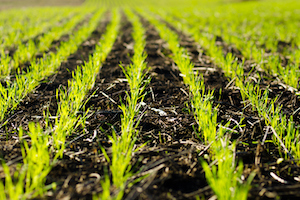Due to challenges linked to excessive moisture and snowfall, as well as below-average temperatures, producers across Kansas have not been able to topdress their wheat. To provide insight into how to work around these obstacles this season, Kansas State University Research and Extension agricultural experts are sharing their tips.
First and foremost, producers must understand the criticality of timing. It is imperative to get the nitrogen on early enough to have the maximum potential on yield; applying too late in spring can be problematic. For well-drained, medium- to fine-textured soils, topdressing can begin now. Wheat that is grown on sandier soils, however, does not need early nitrogen application.
Further, producers can benefit from applying nitrogen in a dribble band on 15- to 18-inch centers, assuming no herbicides are being applied. Ideally, a nitrogen soil test should have been previously conducted to help determine the rate of application.
According to the experts, if the wheat was grazed in the fall and winter, producers should add an extra 30 to 40 pounds of nitrogen per acre for every 100 pounds of beef weight gain removed from the field. More nitrogen may be necessary if the conditions are favorable for heavy spring grazing.
Finally, the experts note that some fields may benefit from an application of sulfur or chloride. These nutrients should be applied based on a soil test and a history of response. For more information on topdressing wheat, visit the K-State University Research and Extension website.
